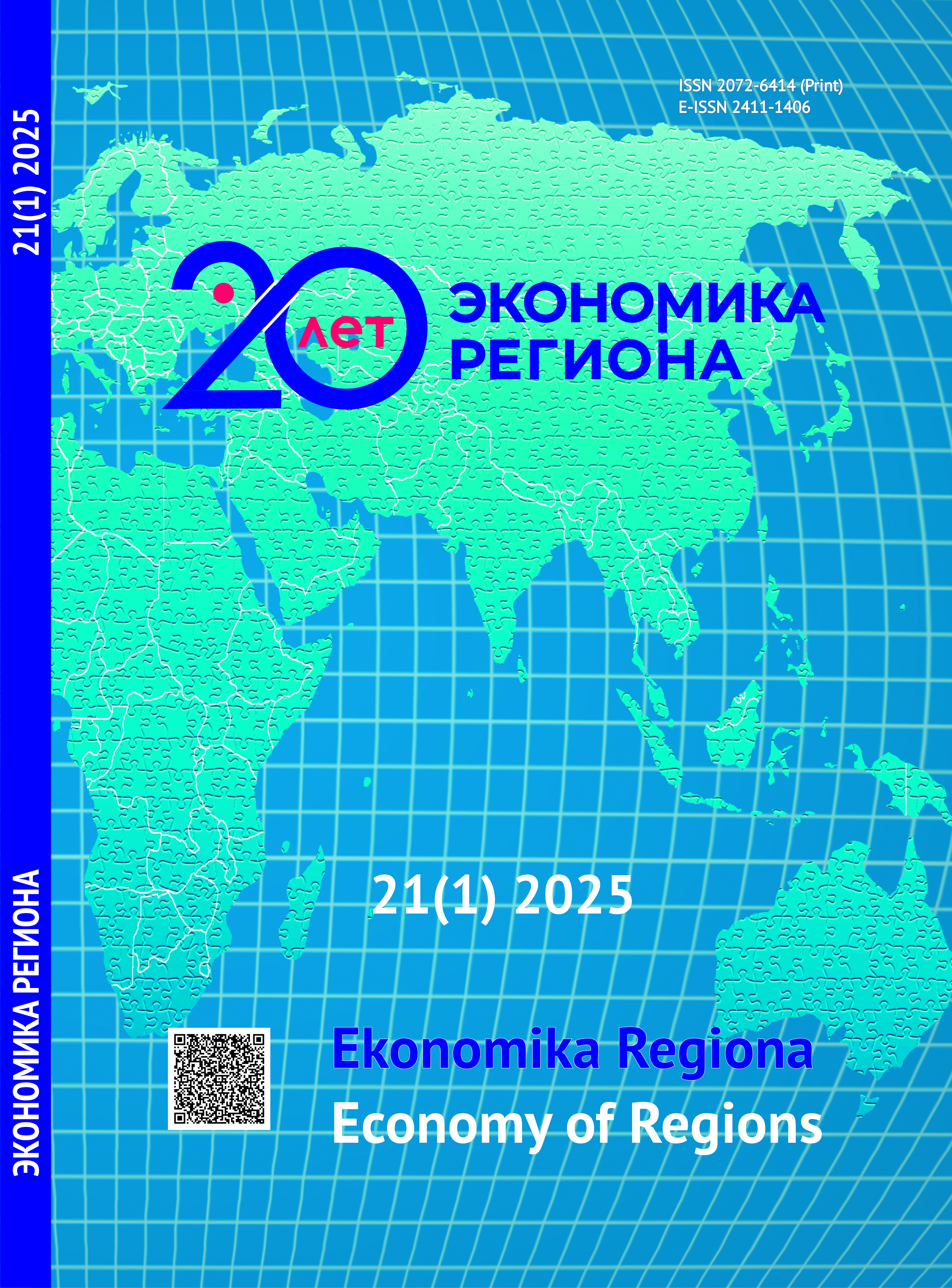The Relationship between the Dynamics of Total Factor Productivity and the Age Structure in Russian Regions
DOI:
https://doi.org/10.17059/ekon.reg.2025-1-9Keywords:
Solow residual method, dual measure of the Solow residual, total factor productivity, age structure of the population, spatial correlation, models of spatial econometrics, regions of RussiaAbstract
In modern society, population aging has become one of the most pressing demographic challenges. Increasing life expectancy and low fertility rates are reshaping age pyramids across many countries. This article examines how factors describing the age structure of the population influence the growth rate of total factor productivity (TFP). The study tests the hypothesis that population aging has a positive relationship with TFP growth. To calculate TFP growth, the study employs an approach based on the dual method of estimating the Solow residual, which accounts for potential distortions in the regional distribution of capital in Russia. Due to data availability, the analysis considers statistical data for Russian regions up to 2021. The calculated Solow residuals vary significantly across regions. For example, in Moscow, the Solow residual is 0.06 % (just 2.5 % of GRP growth), whereas Russia’s average annual GRP growth rate is 0.75 % (17.6 % of the average annual growth rate of real GRP per capita). The study examines several indicators of age structure, including the dependency ratio, median age, mean age, and the ratio of mean to median age. Moran’s index calculations confirm the expected significance of spatial correlation. Spatial econometric models, specifically the spatial lag model (SLM), reveal that age structure factors significantly influence TFP growth. The results show that both median and mean age positively impact TFP growth. The estimated effects of changes in age structure on TFP can be used to forecast regional economic development while considering demographic trends.
Downloads
Published
How to Cite
Issue
Section
License
Copyright (c) 2025 Беляков Антон Олегович , Курбацкий Алексей Николаевич, Приймак Ирина Игоревна

This work is licensed under a Creative Commons Attribution 4.0 International License.




